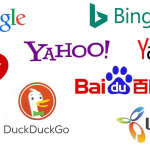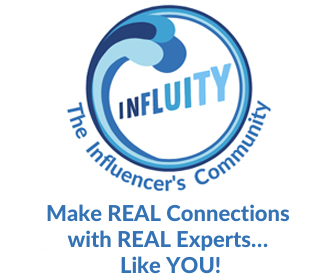“Lingchi” – also known as “Death by a Thousand Cuts”.
You might know it as a form of torture and execution that was used in Asia from roughly 900 CE up until the early 1900s.
Today, it’s a psychological saying that refers to the idea that, if left unchecked, a major negative change can happen slowly over time because of a series of several small issues.
When it comes to your marketing, there are 6 silent, but deadly, killers that will start to slowly cut down any paid ads campaign and ensure its imminent demise. (There is an imperfect solution to each!)
Ready to dive in?
1) Budget-to-Goal Misalignment
We had an example of this come up on a prospect call the other day.
They wanted to craft a webinar campaign that would generate 6-figures in closed deals. The budget…$500/month.
The bigger the deal size, the bigger the ad spend will need to be. If you only have $500/month to spend on LinkedIn, you can certainly focus on retargeting a small warm audience, but your expectations must be aligned before going that route.
This misalignment happens so often. It’s probably one of the most common occurrences that we hear from companies that we work with.
Don’t get me wrong, we’d all LOVE to have a campaign perform and kick ass right out of the gate and produce multiple SQLs at a very cheap price.
But 9 times out of 10, that just doesn’t happen right away.
It is imperative that campaigns be given some time to optimize. That amount of time also varies dramatically among our clients because it is dependent on their ad spend.
Here’s what I mean…
If you are testing a new campaign for $1,000 in ad spend per month, it is going to take you a LOT longer to get enough data that you can use to optimize the campaign than if you are spending $5,000 per month. That additional ad spend gets you more results, more impressions, more audience data, and more click data on your ads than a lower monthly ad spend.
So…you don’t have to spend tens of thousands to test something, but you do need to spend enough to let the campaign actually produce workable data — or be patient while the campaign spends over a few months if you have to have a smaller ad spend.

2) Time Expectations
There are two areas that I’d like to address here when it comes to timeline expectations and how long you should expect to wait before you start to see results…
1. Think you should see returns in the first 30 days of running new ads on a new platform?
This too is dependent on spend and especially dependent on what you are asking your prospects to do. If you are asking them to download a piece of content that could be valuable to them, I’d expect to see some decent results right out of the gate and over your first month.
But if you’re running a direct to call/consultation/demo campaign, then I would significantly lower my expectations as to how many will come in during those first 30-60 days – especially if this is the first advertising you’ve done to your audience that likely doesn’t know you.
2. Have you thought about your sales cycle and how long that takes?
If you have a normal sales cycle of 4-6 months, then you can’t expect to have closed deals from an advertising (or any type) campaign in the first 60 days of running. The goal in those first 60 days (and longer) is to prove that you can generate marketing qualified leads and add them into your sales pipeline.
Do those leads check the boxes of the types of people you want? Is the cost per lead going down with your optimization efforts? If those are both true, then you have a winner of an early campaign.
If the expectation of return is too fast, campaigns will get shut down before they even have a chance to ramp. At LinkedSelling, we have seen instances where high-value deals can be tied back to ads from 1 year ago!

3) Sales & Marketing Targeting Gap
The The B2B Institute just dropped an article showing that Sales and Marketing only overlap 16% on prospect targeting! So if you don’t nail down the ICP from the jump, you’re sabotaging your future self.
Get the sales team’s buy-in on the prospect profile and what counts as an MQL before the campaign even turns on.
No campaign will be successful if there is constant arguing (or just no communication) between the Sales team and the Marketing team.
“If we could send you leads that tick these boxes, would that make you happy?” Get a yes on that and you can sidestep this classic pitfall.

4) Attribution Agreements
The key here is agreeing on how you attribute value to your campaigns. First touch, last touch, impression-based, pipeline velocity, MQLs, SQLs, and so on.
Getting clear on how you tie value back to your campaigns is going to make your job so much easier in the long run & help you define a strategy to stick with and scale.
This too is often a problem of lack of communication between departments or team members. The key here is agreeing on how you attribute value to your campaigns.
Tracking attribution essentially tells you what the source of the lead is – where it came from. So, that means that this is a vital piece of data that will be used to determine if any campaign is successful or not.
Plus, it will make sure that your marketing team and your sales teams are talking the same language and getting feedback on lead quality, which will lead to greater opportunities for optimization in the future.
Lack of communication is something that we see ALL THE TIME. So get on the same page – because let’s be honest – your success relies on the other’s success.
5) Uniform Buy-in Up and Down the Org Chart
Marketing & the CXO’s need to line up on expectations as they head into a new campaign. If your CFO wants a return by month 3, and you have rolled out a 6-month to 1-year content game plan, your campaigns are going to get cut too soon.
Not only is this important from a goal standpoint, but it also is extremely important from a communications standpoint.
It’s never a good campaign when one hand doesn’t know what the other is doing – aka sales and marketing and leadership aren’t talking to each other.
That automatically handcuffs the performance of a campaign because there are different definitions of success throughout and if they aren’t talking, there won’t be alignment and chances are, the campaign will be cut for “lack of performance.”
6) Rapid Fire Campaign Swaps
“This isn’t working, let’s change the ads”… We hear this a lot (and try and stop it)!
This constant rotation of new campaigns doesn’t give you enough attribution time to see what is really working and may not be addressing the true problem at hand. (Poor website design, no sales team follow-up, lack of long-term nurture)
The not-so-perfect solution to all this is education. Educating our clients and trying to coach them through these hurdles before a campaign even begins is going to make your life (and ours) so much easier.
This is especially true when you look at an organization’s average time to close a deal. If the sales cycle is 6-9 months, and the campaign has only been running for 2 months, then you would not expect there to be any “CLOSED” deals that have come out of it yet.
BUT – the thing you CAN measure from the beginning is the number of quality leads and appointments that are coming out of it.
Are there prospects moving through your sales cycle? Are discovery conversations continuing into two, three, five more conversations? If that’s the case, then that is a winning campaign and you should scale the crap out of it to fill your pipeline for the long term – not just relying on short term wins.
Looking for some additional guidance and expertise on your campaign plans for 2024 and beyond?
Now is a great time to schedule a time to speak with us so that we can catch any of these pitfalls early in your progress so you aren’t wasting budget and time.
The post 6 Things to Avoid When Running a Paid Ads Campaign appeared first on LinkedSelling.













